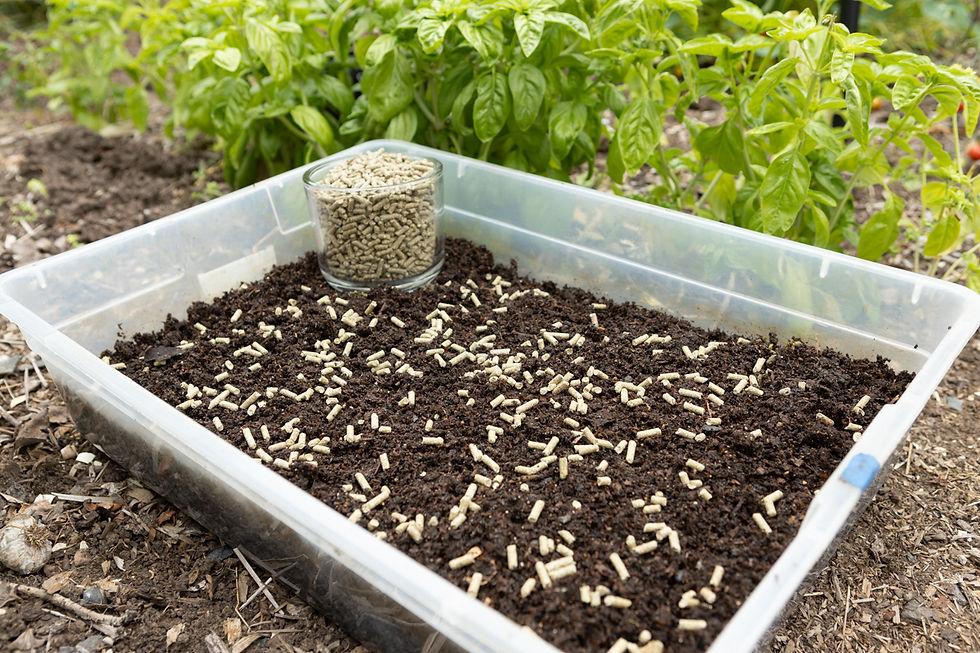How to Get Maximum Reproduction Rates
- Clinton James
- Sep 6, 2023
- 2 min read
Updated: Oct 2, 2023
The ideal population density for Eisenia fetida (red wiggler worms or composting worms) can vary depending on several factors, including the available space, food source, and environmental conditions. However, there are some general guidelines to consider for maximizing reproduction:
Space
Eisenia fetida require enough space to move and access their food source. A common recommendation is to have approximately 1,000 to 2,000 worms per square meter (about 93 to 186 worms per square foot) of surface area. However, this can vary depending on the depth of the worm bedding and the size of the container or composting system.
Food

These worms thrive on organic matter such as kitchen scraps, vegetable peels, coffee grounds, and shredded paper. The population density should be adjusted based on the amount of food available. As a general guideline, you can start with a smaller population and gradually increase it as the worms consume more food and produce more castings (vermicompost).
Environmental Conditions
Maintaining appropriate environmental conditions is crucial for worm reproduction. Ensure that the bedding material is moist but not waterlogged, with good aeration. The temperature should be within the range of 15°C to 25°C (59°F to 77°F), as this is the optimal temperature range for Eisenia fetida reproduction.
Avoid Overcrowding
While a higher population density can lead to increased reproduction, overcrowding can stress the worms and negatively impact their health and reproduction rates. If you notice signs of overcrowding, such as worms trying to escape the bin or a decline in reproduction, it may be necessary to reduce the population or provide additional space and food sources.
Regular Monitoring: Keep an eye on the population and the health of the worms. If you observe any issues like a decline in reproduction, a foul odor, or other signs of stress, take appropriate measures to address them.
Remember that these guidelines are not strict rules, and the ideal population density may vary based on the specific conditions of your composting system. Regular monitoring and adjustment are essential to ensure the health and reproduction of your Eisenia fetida population.










Comments